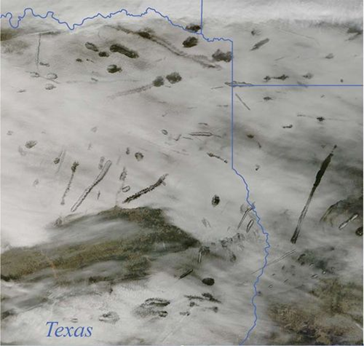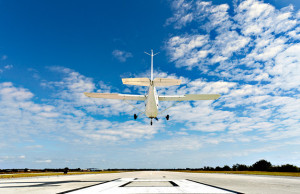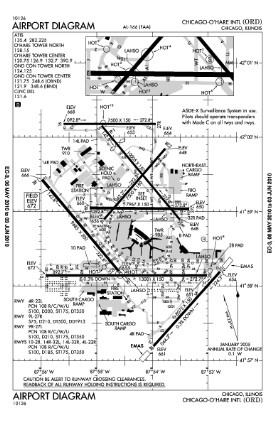David Parker Brown of the AirlineReporter blog and Discovery News have both noted an interesting phenomena – aircraft can punch holes through clouds causing it to rain. According to Discovery News, droplets in many clouds exist in a supercooled state. In fact, they can be as cold as -34 degrees C (-35 degrees F) and yet remain in a liquid form. When an aircraft cruises through, it can cause a quick drop in temperature and this freezes the droplets. Hence, the cloud is now populated by ice crystals and as droplets begin condensing around them in a chain reaction, a hole of blue sky appears where there was once a white cloud and the water and ice falls to earth.
Apparently though, not all aircraft that fly through clouds can seed them and generally speaking, there’s a "goldilocks" set of conditions that must be met. These conditions include clouds that are too high in the atmosphere, are too cold and may already be frozen. On the other hand, low clouds are warmer and hence an aircraft’s disturbance won’t produce ice. Moreover, Turboprop aircraft are better than jets for producing seeding effects because they often fly at the right altitude to encounter clouds with supercooled droplets plus they generate thrust by pushing fairly large amounts of air (as opposed to heated jet exhaust) that cools in their wakes.
So just how much potential is there for “plane seeding?” According to a new study in Bulletin of the American Meteorological Society, 7.8% of Earth is covered in clouds ripe for "plane seeding” but its important to also note that aircraft cannot alter global weather patterns (although they may impact weather patterns in a very localized area). In some instances though, planes flying through a cloud can also create "canal clouds" that can be many miles long and even visible from satellites.
Hence and if you find that your home or street has rain or snow while your neighbors do not, perhaps it was inadvertently caused by “plane seeding.”





